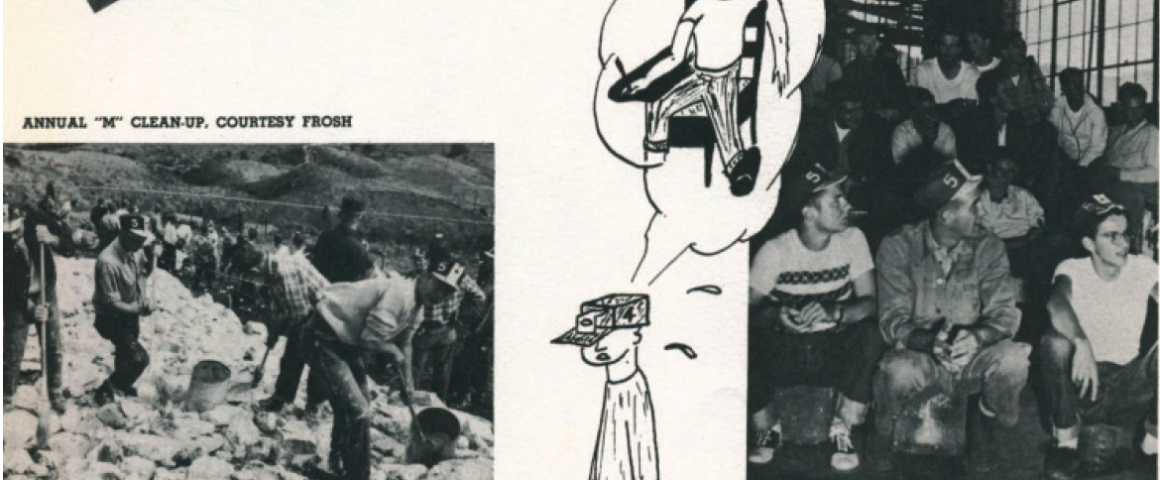Before the school year starts at Colorado School of Mines the freshmen class don hardhats, line up with rocks from each student’s hometown, and march up Mount Zion to add those rocks to the “M”. Every student on campus can recall when they took part in this traditional pilgrimage. However, much of the history surrounding the peculiar tradition of lugging rocks up a mountain is not widely known. Many facets of this tradition reflect the growth of the school.
The M itself was designed in 1908 as part of a Mines student’s senior thesis. 1951 is the year most commonly associated with the start of the “M” climb, but that is only the year that freshmen started to bring rocks from their hometown. In 1921 the Oredigger printed an article describing Freshman students, or Frosh as it was common to call them at the time, whitewashing the “M”.
During the early days of mines, the whitewashing of the “M” was part of a larger initiation process for the freshmen class. In the past, while the freshmen whitewashed the “M” they were under the watch of the Sophomores. The whole process was meant to make the freshmen feel like the bottom of the Mines hierarchy. In 1921 when the freshmen “dared to” whitewashed the “M” on their own they were warned in the Oredigger they had, “incurred the wrath of your rulers and it is said, by those who know, that they will seek their revenge”. Now the freshmen make the “M” climb on their own and they aren’t subject to large-scale hazing. This change reflects how the community at mines has become less divided by year.
One of the purposes of the “M” climb is to teach freshmen “The Mining Engineer”. In 1879 a version of “The mining engineer” was adopted and since then the fight song has undergone many revisions.(Georgia Tech adopted the song later so we didn’t steal it from them… according to Wikipedia we “sourced” it from Dickinson College.) The most notable change is the removal of the verse, “And if I had a daughter, I’d dress her up in green, I’d send her up to Boulder to coach the football team, But If I had a son, sir, I’ll tell you what he’d do, He would yell to hell with Boulder like his daddy used to do”. The change in the song reflects a change in what is defined as the traditional men’s and women’s work. Despite the lower number of female students than male students at mines, the removal of such a blatantly discriminatory dichotomy is part of a growing universal realization that men and women don’t possess inherently different capacities.
Over time even the headgear worn by the students embarking on the “M” climb has changed. Most current and recent students are familiar with the hard hats that are issued by the school before the “M” climb. Before hard hats were given to students there were frosh Caps. Named after the freshmen that would wear them, the caps were emblazoned with the year that the freshman was expected to graduate. A former Oredigger writer and member of the Blue Key honor society George Mitchell described these caps as, “simulated miners cap” which were “canvas and had an attachment on the front of it where you would put a carbide lamp.” The hardhats distributed now highlight how Mines has embraced the wider variety of majors that it offers.
These three changes represent a small part of all that has changed over Mines’ history. These changes aren’t the most important or the most direct to have happened at Mines, but by being tied to one of the major traditions on campus they are an interesting record.


'From the Archive: The evolution of a tradition' has no comments
Be the first to comment this post!